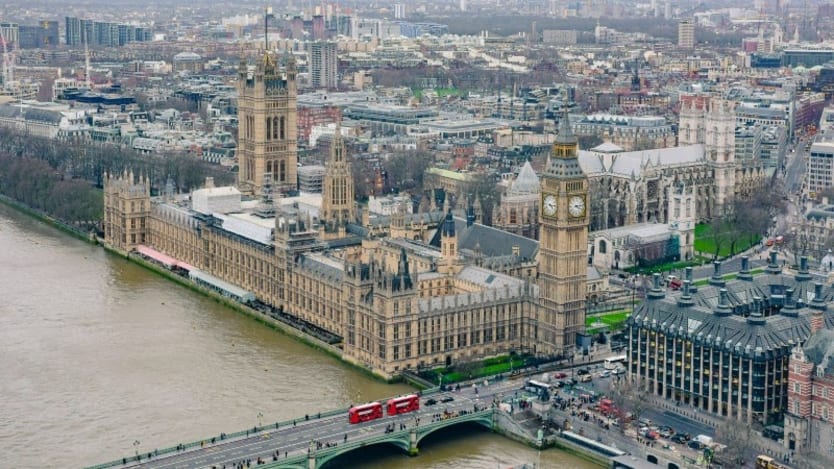
LONDON — Research commissioned by the U.K. government has found that seven out of 10 departments are not spending aid transparently enough to meet its own targets.
Of the government departments spending aid, just two — the Department for International Development and the Department of Health and Social Care — achieved transparency ratings of “very good,” according to research by campaign group Publish What You Fund, while the Department for Business, Energy, & Industrial Strategy was rated “good.”
“It’s vital that we know exactly what [government departments’] aid is achieving, so we can celebrate all the good results and identify areas that need improvement.”
— Romilly Greenhill, U.K. director, The ONE CampaignMeanwhile, the Foreign & Commonwealth Office — which could be given more power over DFID as part of a post-Brexit reshuffling — was among departments failing to meet transparency targets. And classified as “very poor,” the Department for Work and Pensions was the worst-performing department.
In 2015, the U.K. government announced that less aid money would be spent by the Department for International Development and more by other government departments.
Amid concerns from advocates about how this would affect transparency around aid spending, the government said that by 2020, all departments spending aid should be ranked as “good” or “very good” on the Aid Transparency Index, which is overseen by Publish What You Fund.
But with the deadline set for this year, the group’s latest investigation into government aid spending revealed that while some departments have made improvements — especially in releasing more data — the majority still do not reach the government’s desired standards of transparency, particularly on performance and impact.
The report examined “different types of information across departments, from financial, such as budgets, to documentation, such as contracts, to objectives in projects” to understand how transparent they were being about their aid spending, said Alex Tilley, research manager at Publish What You Fund.
DFID, the U.K.’s main spender of official development assistance, scored highest on the index, with 86.9 points out of 100. While some minor improvements were called for, the researchers praised DFID’s transparency, calling it a leader among government departments.
But FCO — which DFID could be merged with or forced to report to under a civil service overhaul, according to recent reports — scored just 48.9 and was classified as “fair.” The ranking represents an improvement on the “poor” rating it received for its performance in 2018 — having improved its financing and organizational planning and commitments, and now publishing information to the International Aid Transparency Initiative on a quarterly basis — but still falls below the government target.
FCO was the third-largest spender of ODA in 2018, allocating £633 million ($800 million), or 4.4% of all U.K. aid that year.
Tilley said some departments rated “fair,” including FCO, have “maybe done as much as they can without a significant change in organizational culture and their approach to aid transparency.”
The report identified the “secrets of success” in DHSC and BEIS, which respectively scored second- and third- highest after DFID. “Both departments had senior-level buy-in but delegated responsibility without excessive sign-off,” Tilley said.
Secrets of Success
The Publish What You Fund researchers found that DHSC and BEIS, which achieved ratings of “very good” and “good” respectively, “both approached their transparency in a structured way. Both set up their own, internal ODA transparency working groups to coordinate their approaches and systems. These working groups developed detailed plans which included specific milestones the respective teams would meet during the process. They also worked with simplified approval processes involving senior-level buy-in that delegated responsibility to the ODA teams without the need for lots of senior sign-off. By taking a structured, strategic approach to transparency, DHSC and BEIS were able to develop effective systems to publish high-quality data to a regular schedule.”
He added that transparency is “a combination ... of policy and practice in terms of having a team that can do it as well as having the policy approval to do it.”
Asked whether the government could meet its 2020 target overall by the end of the year, Tilley said it would “vary across departments.” For some, “it will require significant changes in terms of practice and culture towards aid transparency,” he added.
Romilly Greenhill, U.K. director at The ONE Campaign, said in a statement: “The progress since last year is positive, and shows a commitment to transparency across Government. It’s encouraging to see departments that are relatively new to spending aid, such as DHSC, performing so well.
“However, more needs to be done. Only three out of ten departments meet the Government’s own target rating of ‘good’, and the pace of improvement is more a stroll than a sprint.
“The impact their spending has is one area that departments should release more information about. It’s vital that we know exactly what their aid is achieving, so we can celebrate all the good results and identify areas that need improvement.”
A government spokesperson said in a statement: “More transparency leads to better results for the world’s poorest people. This report recognises improvements in the publication of aid data, but we know there is more to be done.
“Departments across government will continue to improve the transparency of UK aid and its impact — for example, by developing a new publishing tool for aid data, committing to the monthly publication of data, and centralising transparency responsibilities.”








